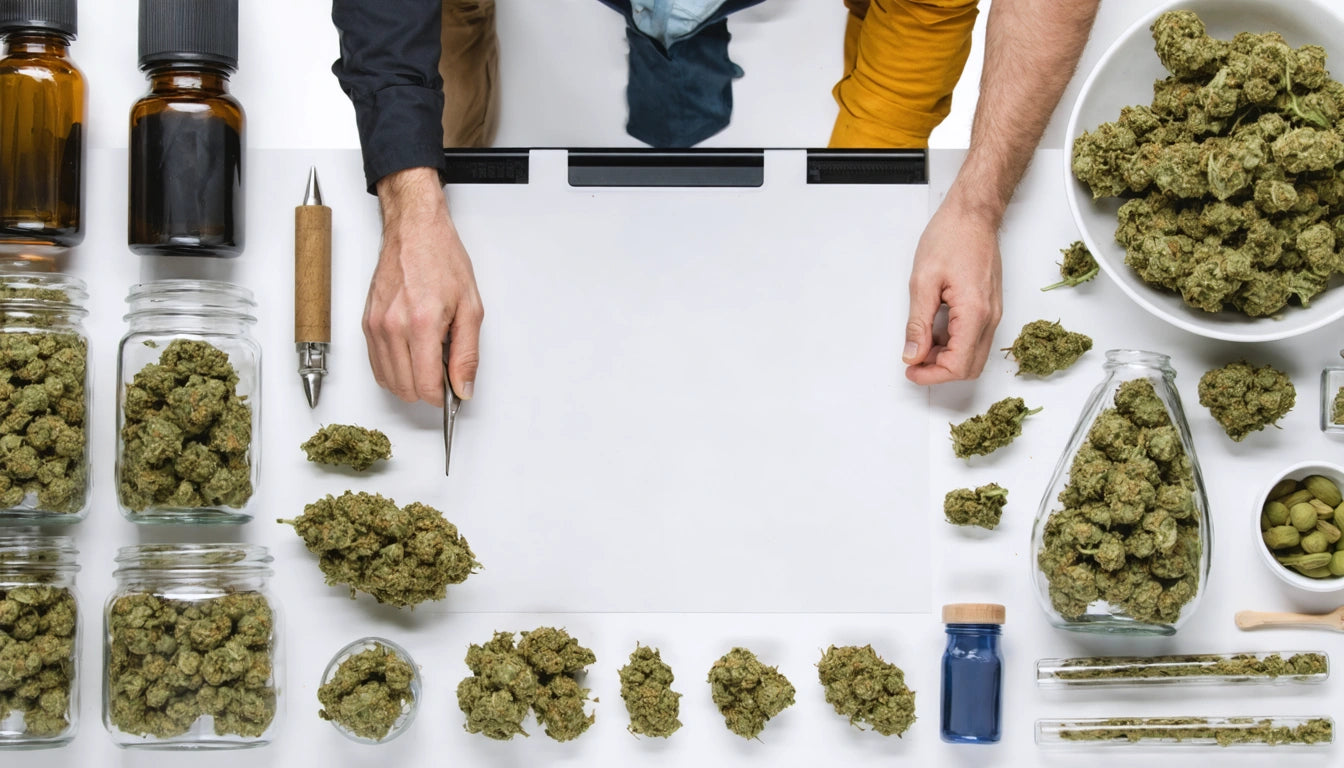Table of Contents
Understanding the Cost of an Ounce of Weed
When purchasing cannabis, understanding how much an ounce of weed costs can help consumers make informed decisions and budget appropriately. An ounce represents a significant purchase for most consumers and typically offers better value than buying smaller quantities repeatedly. This guide explores current pricing, factors that influence cost, and practical considerations for purchasing by the ounce.
What Is an Ounce of Weed?
An ounce of weed equals 28.35 grams, making it one of the larger standard quantities available to consumers. For perspective, this amount typically produces 28-56 joints or 40-60 bowl packs, depending on how they're rolled or packed. For many regular consumers, an ounce might last anywhere from two weeks to two months, depending on consumption habits.
According to our guide to cannabis ounces, this quantity is often the maximum amount that recreational consumers can legally purchase in a single transaction in many states with legal markets.
Average Cost of an Ounce: Market Variations
The price of an ounce varies significantly based on location, quality, and market type. Understanding these variations helps consumers set realistic expectations when budgeting for cannabis purchases.
Legal Market Pricing
In legal adult-use markets, ounce prices typically range from:
- Budget quality: $100-$160
- Mid-tier quality: $160-$240
- Premium quality: $240-$400
Some luxury or craft cannabis products may command even higher prices. States with mature markets like Oregon and Colorado often offer lower prices due to market saturation, while newer markets or those with limited licensing tend to have higher prices.
As detailed in our analysis of current ounce costs, prices in legal markets have generally trended downward as markets mature, though this varies by region.
Traditional Market Pricing
In areas without legal access, prices for an ounce typically range from $150-$350 depending on quality and local availability. These prices can fluctuate significantly based on supply chains, seasonal availability, and risk factors.
Factors Affecting the Price of an Ounce
Several key factors influence how much an ounce of weed costs:
- Quality and potency: Higher THC percentages and premium cultivation methods generally command higher prices
- Strain rarity: Exotic or limited strains often cost more than common varieties
- Market maturity: Newer markets typically have higher prices until supply increases
- Taxes: Legal markets apply various tax structures that significantly impact final pricing
- Testing and compliance costs: Legal products undergo testing that adds to production costs
- Seasonal factors: Outdoor harvest seasons can temporarily lower prices in some markets
As our market analysis shows, these factors can create price differences of $100 or more per ounce even within the same city.
Measuring Your Ounce Accurately
When purchasing an ounce, accurate measurement is crucial to ensure you're receiving the correct amount. While visual estimation is common, it's not reliable due to density variations between strains.
For precise measurements, we recommend using quality digital scales designed for weighing small quantities accurately to the hundredth of a gram. These tools help verify that you're receiving the full 28.35 grams when purchasing an ounce.
Professional scales also help when dividing larger quantities into smaller portions for storage or consumption tracking. Many consumers find this helpful for budgeting their usage over time.
Cost Comparison: Ounces vs. Smaller Quantities
Purchasing an ounce typically offers significant savings compared to buying smaller quantities:
- Buying by the gram: $10-15/gram = $280-420 for 28 grams
- Buying eighths (3.5g): $30-60 each = $240-480 for 28 grams
- Buying quarters (7g): $60-100 each = $240-400 for 28 grams
- Buying an ounce (28g): $160-280 directly
As outlined in our guide to cannabis eighths, the price-per-gram discount when buying in larger quantities can be substantial, often 20-40% less expensive than buying the equivalent amount in smaller increments.
Price Trends and Future Market Developments
Cannabis pricing continues to evolve as markets mature and regulations change. Several trends are worth noting:
- Increasing competition in established markets is driving prices down
- Premiumization is creating distinct price tiers based on quality and brand positioning
- Seasonal outdoor harvests create cyclical price fluctuations in some markets
- Federal policy changes could dramatically reshape pricing structures nationwide
According to our comprehensive analysis of cannabis economics, consumers can expect continued price normalization in legal markets, with prices eventually stabilizing similar to other agricultural commodities.
Understanding these market dynamics helps consumers make informed decisions about when and how much to purchase, potentially saving hundreds of dollars annually for regular cannabis users who can take advantage of quantity pricing.











Leave a comment
All comments are moderated before being published.
This site is protected by hCaptcha and the hCaptcha Privacy Policy and Terms of Service apply.